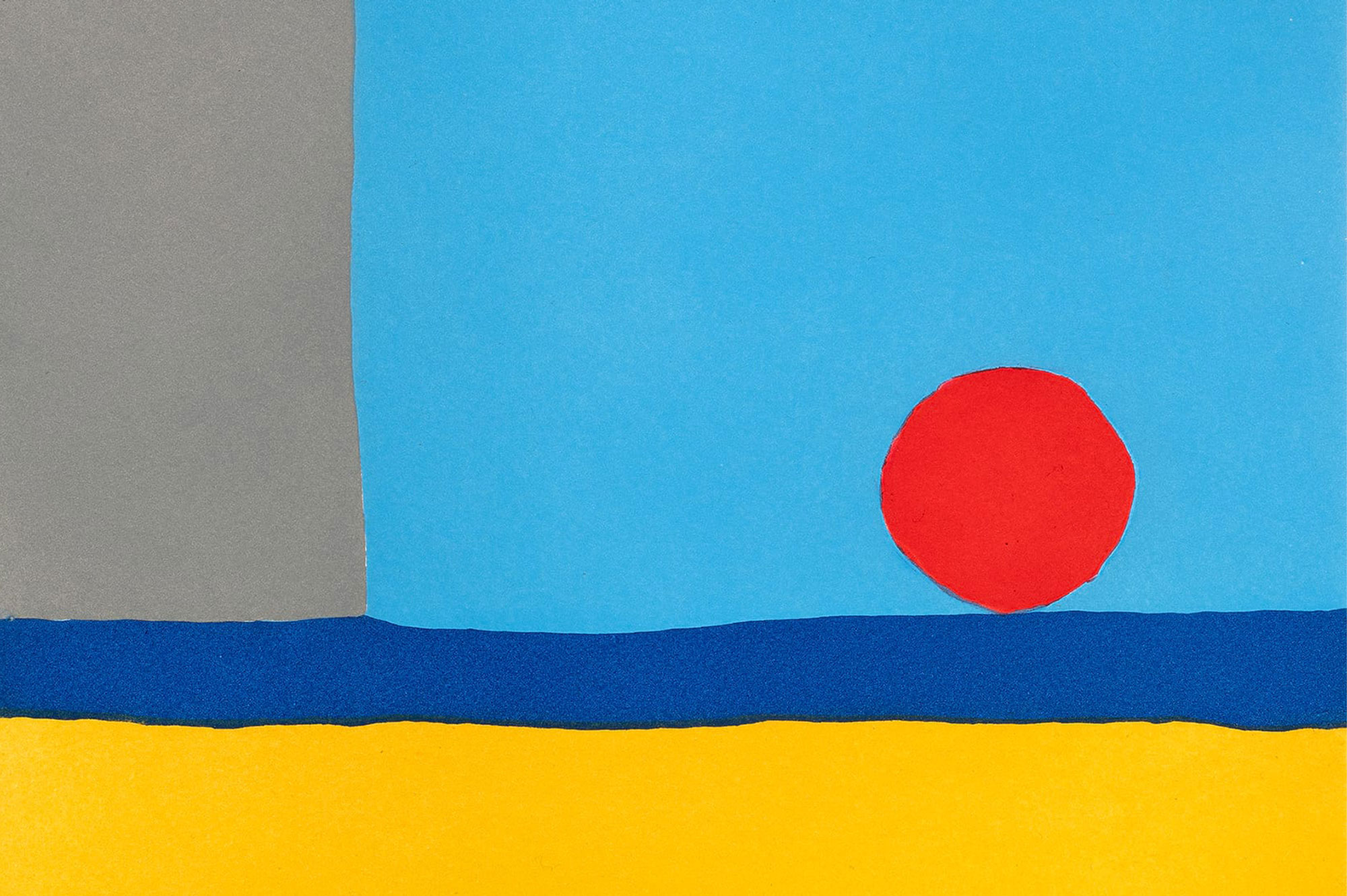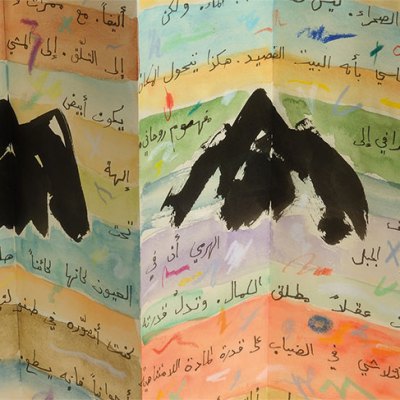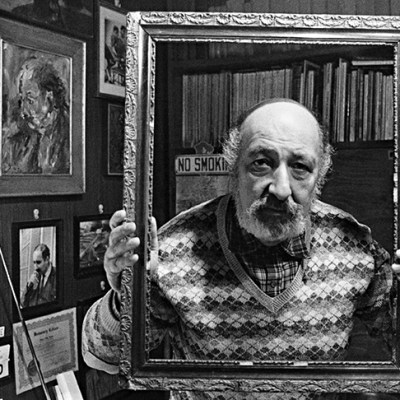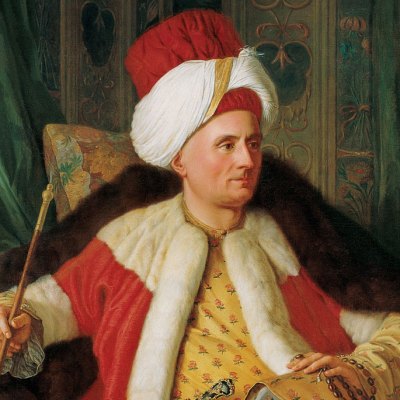Showing work in Turkey is a personal affair for Etel Adnan: a homecoming of sorts. Of her childhood, the Beirut-born painter – also a poet, tapestry designer, novelist, teacher of aesthetics and librettist – has said: ‘We saw ourselves as an Ottoman family.’ Adnan’s grandfather was a Turkish soldier. Her Damascus-born father, Assaf Kadri, was governor of Smyrna under Ottoman rule. At the Istanbul Biennial in 2015 Adnan exhibited Family Memoirs on the End of the Ottoman Empire (2015), a handwritten text in the form of an accordion-like folding notebook, or ‘leporello’, which makes reference to the Armenian genocide, in which she fears her father, being an Ottoman officer, took part. Adnan ends her essay by inviting Turkey to consider its past and ‘face the future with more serenity’. Other than that exhibit, Adnan’s work has not previously been shown in Turkey (though fans of her poetry abound in Istanbul). ‘Impossible Homecoming’, an exhibition at the Pera Museum in Istanbul’s Beyoglu district, encompasses ceramics, engravings, oils, pastels, watercolours and textile works, reflecting a versatile career rooted in the eastern Mediterranean. Ahead of the exhibition Adnan had hoped to visit Istanbul and Izmir (formerly Smyrna), until the pandemic curtailed her plans and the homecoming indeed proved impossible.
Etel Adnan in her studio in Paris. Photo: James Mollison

Yet Adnan’s voice is strongly felt through the galleries. It emanates from Ismyrna (2016), a video directed by Lebanese film-makers Joana Hadjthomas and Khalil Joreige, in which Adnan and Joana Hadjithomas share their thoughts on Smyrna, which has acquired mythical status in the minds of the two women, who both have ancestral ties to the ancient port city – it was there that Adnan’s Syrian father met her Greek mother. Adnan’s fascination for her mother’s homeland is present too in a 45-minute video interview recorded at her home in Paris in 2015. Her interviewer is Serhan Ada, the Turkish translator from the original French of her long poem The Arab Apocalypse (1980) and the show’s co-curator with the artist Simone Fattal – founder of the Post-Apollo Press and Adnan’s partner of many decades.
Untitled (1961), Etel Adnan. LaM, Villeneuve d’Ascq. Photo: © Nicolas Dewitte; LaM

Often using knives and spatulas to apply pure colour to canvas, Adnan has devoted much of her practice to excavating landscapes of lost homes: Smyrna, the family paradise she never regained; Beirut, where she grew up; and the west coast of the United States, where she taught philosophy from 1958–72 at Dominican College of San Rafael, California. Hills overlooking distant lands, satellites circling colourful planets, and an immovable sun – the ‘Nothingness’ that she refers to in The Arab Apocalypse, illuminating the beaches of her childhood in Lebanon – dominate these evocative compositions. Wandering among them I recall something Adnan has said about her process: ‘When the colour comes out of the tube I don’t want to mix it, because there’s such an immediate beauty about the joy of colour.’ This immediacy defines The Olive Trees (2018), four canvases that delight in the colour and form of Lebanon’s ancient trees. There’s a different sort of directness in paintings from The Weight of the World, a series of geometric abstractions which Adnan made in response to Hans Ulrich Obrist’s invitation to exhibit at the Serpentine in 2016. Here, the red squares that populate her work from the 1960s have morphed into red circles, recalling Adnan’s idea of ‘the magic of geometry’ wielding ‘the power to invade the mind’.
Le poids du monde (The Weight of the World) 33 (2017), Etel Adnan. Private collection. Courtesy Galerie Lelong & Co. Paris; © Etel Adnan
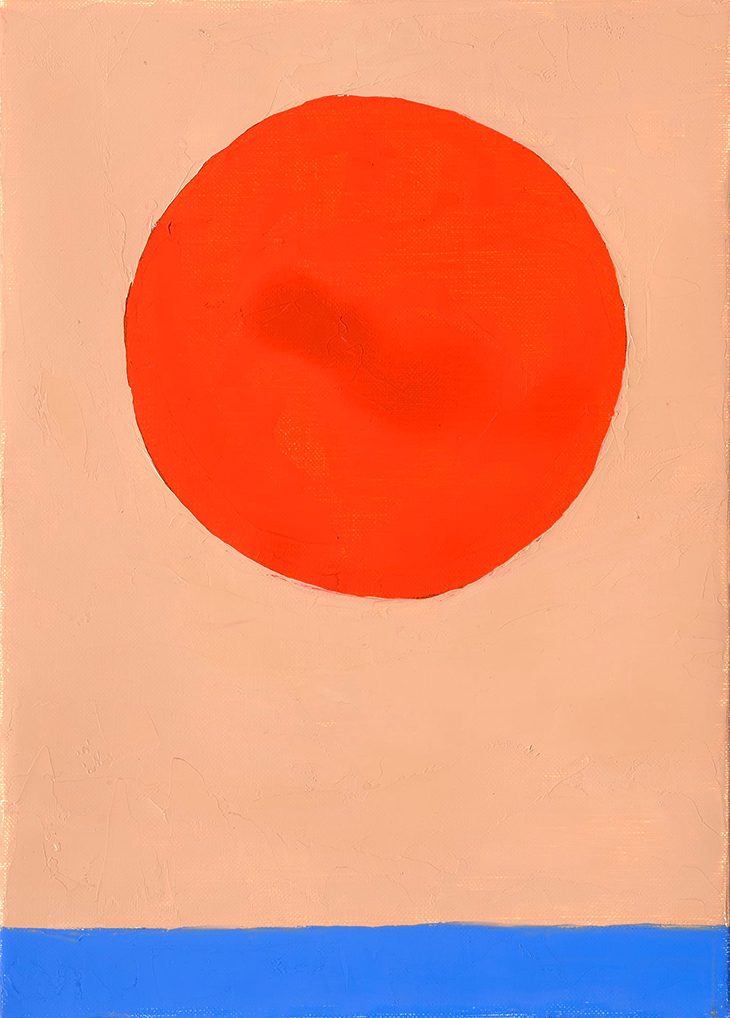
Planets, stars and satellites often seem to provide an anchor within Adnan’s paintings. Witness nine works from the Planets series (2019–20), in which objects and forms such as bottles, coffee cups, ships and mountains occupy the foregrounds, while great orbs of colour hover over them. At times this anchoring dynamic shifts: the engraving Distant Sun (2017) depicts the titular star as it sinks, a blaze of red trailing pink, behind mountain-like forms. Wall text beside the work hints at broader ecological concerns at play here, quoting from Adnan’s essay of 2011, The Cost for Love We Are Not Willing to Pay: ‘Planet earth is old news. It’s the house we are discarding.’
Planète (Planet) 28 (2020), Etel Adnan. Image courtesy Galerie Lelong & Co. Paris; © Etel Adnan

In the same essay, Adnan writes of her obsession with Mount Tamalpais, a Californian peak that draws its name from the Miwok Indian expression for ‘coastal mountain’: ‘I painted nothing else but this for years, until I couldn’t think of anything else. To observe its constant changes became my major preoccupation.’ Tamalpaïs (c. 1980), an ink-and-pastel work composed of liquid, tachist-like lines, hangs here among a group of watercolours on the same theme, while Mount Tamalpaïs II (2019), a monumental ceramic work made up of four large tiled panels, shows the preoccupation has continued into recent years. There are echoes in these works of Mount Lebanon in Beirut – as well as, of course, Cézanne’s love for Mont Sainte-Victoire, which also appears in a delicate pencil work from 1990.
Mount Tamalpaïs II (2019), Etel Adnan. Image courtesy Galerie Lelong & Co. Paris; © Etel Adnan

Among the five leporello journals on display in the exhibition, the most striking is Beirut (1975), dating from the period when Adnan returned to the city of her birth and began writing The Arab Apocalypse, just months before the outbreak of the Lebanese Civil War (1975–90). Offering glimpses of sailing ships in the Port of Beirut, it seems to hide more than it reveals, with its concertinaed vistas made up of fragile pencil lines. Adnan received her leporello education from the Beat artist Rick Barton, who used these folded books to record the faces of people he met at Buena Vista, a coffeeshop in San Francisco. It was there that he and Adnan met. ‘This is yours to continue,’ he told her, handing over a book he had started. Adnan complied by adding her own drawings and copying down poems from various geographies: Iraq (Badr Shakir al Sayyab), Syria (Adunis), Palestine (Mahmoud Darwish) and Counter-Culture America (Lawrence Ferlinghetti). In Kalimat II (2015), another leporello, she used pomegranate juice and the ancient Egyptian watercolour technique of transparent aquarelle to transform the Arabic words for poetry, revolution, colour and light into a meandering composition that brings to mind Paul Klee – the first painter, Adnan says, she fell in love with.
Les oliviers (The Olive Trees), 2019, Etel Adnan. Photo courtesy Galerie Lelong & Co. Paris; Ⓒ Etel Adnan

The huge geographic sweep of Adnan’s life and work – and her willingness to experiment with different media – might be encompassed by the word Motion, which is the title of a 92-minute-long collage of Super-8 film clips shot in New York in the 1960s. Comprising a lingering gaze at the city’s bridges, pedestrians, planes, puffs of factory smoke, ships and waves, the clips were digitised in 2012 and first shown the same year at Documenta 13. These celluloid vistas serve her as well as her folding notebooks or small mobile canvases – all evidence of Adnan’s undimmed fascination for the world that surrounds her.
‘Etel Adnan: Impossible Homecoming’ is at the Pera Museum, Istanbul, until 8 August.
